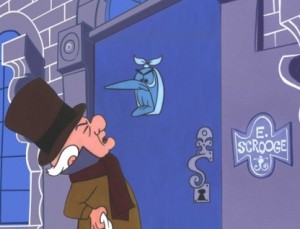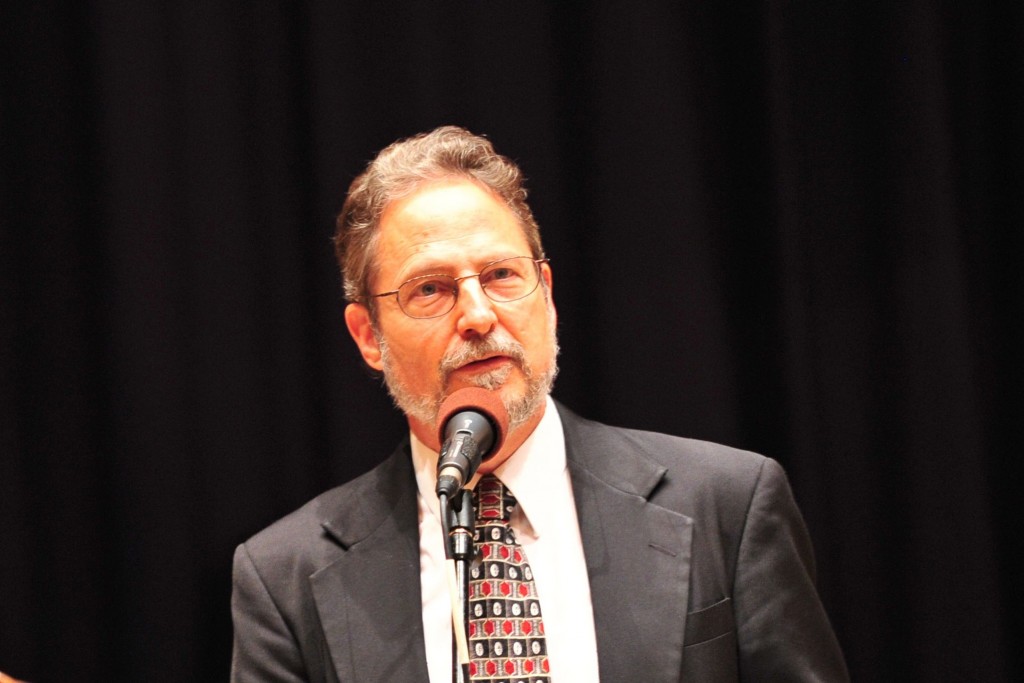By Sharon Thiel
You know it’s going to be a good interview when you ask for the goal of your subject’s efforts, and he replies, “My heart is, above all else, to know Christ and to make Him known; His story. We all have a story, and our stories all end up with Him: as our Saviour and Lord, or as our Judge. What better, then, when I can tell, through a story, the Gospel of Jesus Christ?” That was the immediate reply from David MacAdam; Pastor, teacher, playwright, husband, father of three, grandfather of 10 (with the 11th on the way!), and the keeper of perhaps one of New England’s best creative treasures.
David MacAdam is director and founder of New Life Fine Arts in Concord, Massachusetts. With the tagline “Theater you can believe in”, this anointed group has dedicated their time and talents to “Provide high-quality entertaining productions with spiritually uplifting themes”, the first of four commitments made on the About page of their website www.newlifefinearts.org. One of their most successful efforts is the annual presentation of “Ebenezer Scrooge: A Christmas Carol”, which this writer has had the pleasure of viewing on multiple occasions in the past decade. I had the privilege of visiting with David by phone, so that I might share with the readers of The Good News Today some insight into this unique and most popular production of the classic Christmas story.
David shared that he wrote the play in 1984 while living in England, and chose this tale because author Dickens knows ‘how to structure a story, and offered this great way to show a man getting a second chance through a clear picture of conviction, repentance and accepting the Gospel’.
 Dickens’ seventh novel, “A Christmas Carol in Prose” was written as music is written; in staves, not chapters, and he makes reference to the Gospel in every single stave! We don’t get that in most modern renditions of the story, but he gives real tribute to the Christ of Christmas. We are told he wrote it in this way because “he intended it to sing out the message that the meaning and spirit of Christmas can be lived every day of the year.” For amazing insight into the specific references made to the Gospel in each stave, check out the New Life Fine Arts website, on the page titled “Charles Dickens and Christmas”.
Dickens’ seventh novel, “A Christmas Carol in Prose” was written as music is written; in staves, not chapters, and he makes reference to the Gospel in every single stave! We don’t get that in most modern renditions of the story, but he gives real tribute to the Christ of Christmas. We are told he wrote it in this way because “he intended it to sing out the message that the meaning and spirit of Christmas can be lived every day of the year.” For amazing insight into the specific references made to the Gospel in each stave, check out the New Life Fine Arts website, on the page titled “Charles Dickens and Christmas”.
Though famous at a young age, Dickens had challenges to overcome. Having descended into the working class at age 12, he was intimately familiar with the horrors of child labor from those days working in a boot polish factory. As a young adult he became quite famous as an author, but fell into debt and marital problems all about the time he was expecting his 5th child. His beloved sister, Frances (known as Fanny) married an Evangelical Pastor. She was well known by all to live out the Gospel with her life. Perhaps through her influence, Dickens visited a Christian outreach to the poorest of the poor in 1843. It was the time of the Reformists (Dickens’ first novel came out about the time when Wilberforce found such success in his efforts to abolish slavery) and it is said the story of Ebenezer Scrooge came to him as he walked the streets of Manchester during his time of troubles that year, completing the novel in six short weeks.
When published, we are told that this story “almost single-handedly revived the festive celebration of Christmas in England”. It had for too long been a liturgical observance to which people were just viewers in the church, and it now became “a celebration of Christ’s love in the home in which all are called to be recipients.” Its effect was of great note, as declared in this quote from  Dickens Scholar, N.C. Peyrouton: Charles Dickens’ A Christmas Carol “parallels the theology that the salvation of man’s soul is affected by the change of heart and life wrought by Christ’s Spirit.”
Dickens Scholar, N.C. Peyrouton: Charles Dickens’ A Christmas Carol “parallels the theology that the salvation of man’s soul is affected by the change of heart and life wrought by Christ’s Spirit.”
In writing his version of Dickens’ tale as a musical play, David MacAdam wanted to stay very close to Dickens’ original story and dialogue, believing that characters “give a view to the soul in their songs”. Each song was composed with an eye to reveal Christ as the answer, using the light and the bearers of light as the image of the Holy Spirit. From the very start, with a messenger bearing a flame within his lantern, each messenger then shines light upon Ebenezer’s Past, upon his Present, and upon his Future. When Scrooge expresses a desire for the light to reveal no more of the bad choices of his past, he models human resistance to coming to the light of Christ, because “our deeds are evil, and we don’t want them brought to light”. It is hoped that we grasp through the message shared that we all are messengers, meant to be bearing the light of Christ.
Everyone involved in these productions is a volunteer, start to finish, and the costumes and sets are amazing! The talent of the vocalists from the tiniest child to Scrooge himself is always apparent, and the message rings clear and true…..it is not just Scrooge, but each of us, as well, who must face that “the humbug is in our hearts”. The desire of all who participate is that viewers be “lovingly persuaded”. MacAdam makes clear (and I can vouch for this with vigor!), “This is not a bait and switch, luring folks to come to see a play then turning it into an evangelical event. New Life Fine Arts tells them a story worth hearing, using wonderful songs, and within that story is the Greatest Story Ever Told.” Jesus said “He who loves the truth will hear my word”.
There are countless wonderful stories of lives being blessed by this play. Multiple church groups use attending as a major outreach each year, especially to international students; with letters from churches telling of two people whose first exposure to the Gospel was this production who are now missionaries in Mexico, and groups of Chinese students who have found Christ through this tale of Ebenezer Scrooge. One audience member asked the person sitting next to him, “Have you ever cried out to God like Ebenezer Scrooge did?” Such incidents are not uncommon. The actor playing Jacob Marley this year is one who originally found Christ as a member of the audience!
In the final Stave of this story, as Scrooge is repenting, David MacAdam tells us, “Our musical adaptation illuminates Dickens’ “A Christmas Carol in Prose” with the work of another 19th century writer, Phillips Brooks – author of the famous Christmas Carol “O Little Town of Bethlehem”:
O holy child of Bethlehem
Descend to me today
Cast out my sin and enter in
Be born in me today
I hear the Christmas Angel
The great glad tidings tell
O come to me, abide with me
My Lord Emmanuel.
Every year it is the goal of all those involved, both behind and before the curtain at New Life Fine Arts, that the current production exceed the highest expectations of any who have praised, or been told about, the excellence of productions past. That is quite the goal, indeed, and as a repeat attendee, I can say they have thus far splendidly achieved that goal. This writer hopes that you will make every effort to attend a performance this Christmas season of “Ebenezer Scrooge: A Christmas Carol”, and bring along everyone you know who needs to discover that “the humbug IS in our hearts”, but there is a Way to get it out for good!
The nine performances will be at the Groton Dunstable Performing Arts Center, 344 Main St., Groton, MA (use 343 Main St for GPS directions) at 7:30 PM on Dec. 7, 8, 12, 14, 15, with Matinees at 2PM on Dec. 8th and 15th, and 2:30PM on Dec.9th and 16th. Group rates are available. Purchase tickets online 24/7 at www.newlifefinearts.org/tickets or by calling 1-800-838-3006 ext.1 for more details and special pricing offers.









